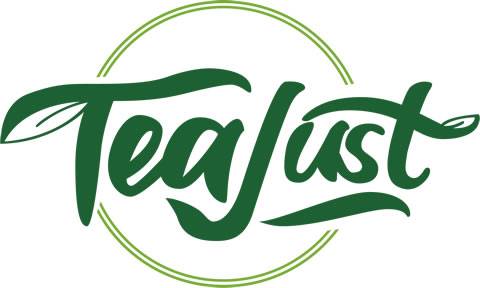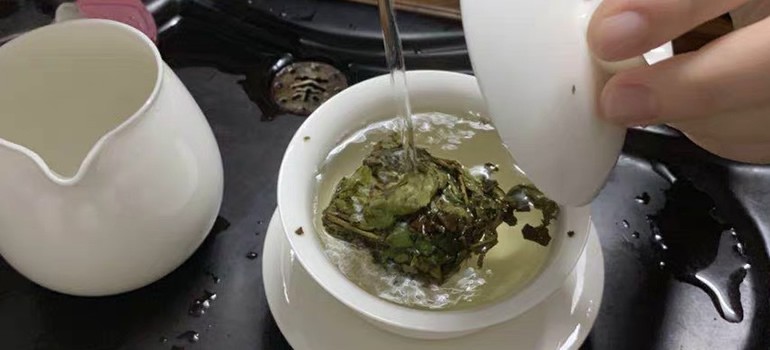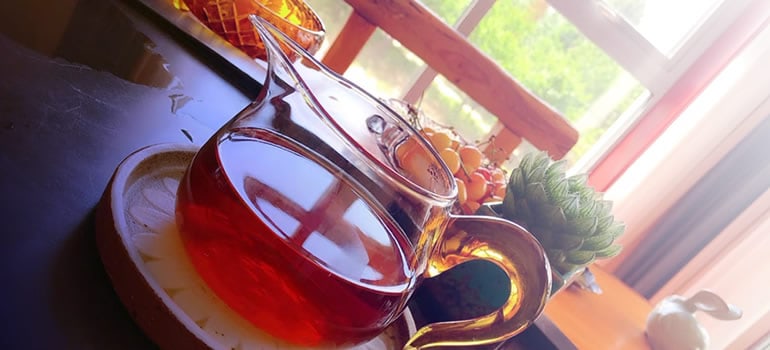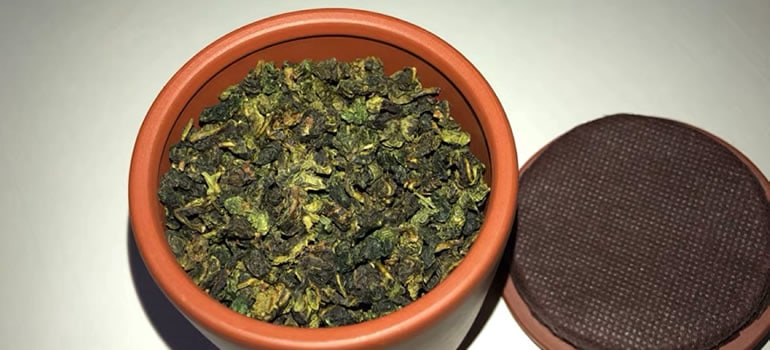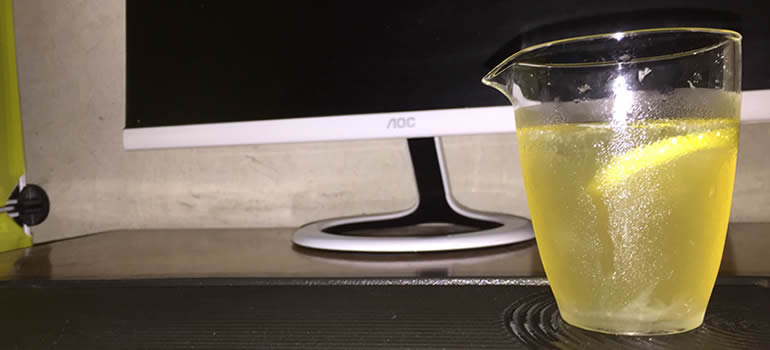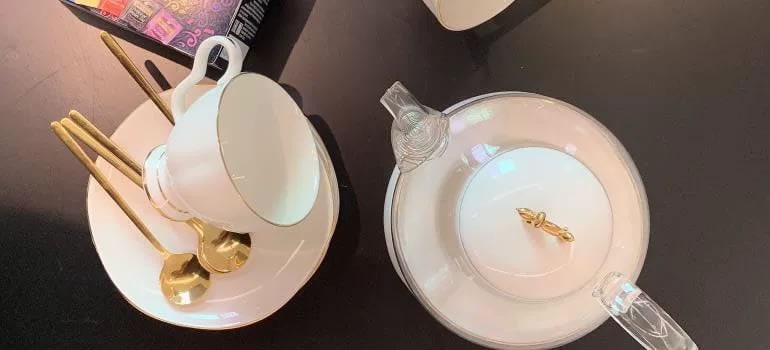
Etiquette and manners are about other people. This is why it is essential to know what is the proper tea etiquette.
Tea has become an integral part of the British culture since the 18th century, and as you may have already guessed it, but there are a lot of do’s and don’ts. And this is what you will learn now.
Knowing and understanding how to drink tea the British way and what the different occasions ask for is in its own form is a way to express respect to your host, the people around you, and the British culture.
This is why here we are going to dabble in everything you need to know about how to drink tea the British way. So the next time you drink tea, nobody will give you any weird looks.
Why Is Tea so Popular Among the British People?
With more than 160 million cups of tea being consumed every day, tea has definitely carved its place in the British traditions and way of living.
So why exactly are the British drinking so much tea, you may wonder?
At first, tea was consumed only by the upper class. With time, however, the prices of tea started to go down, which allowed it to be more affordable.
Due to the monopoly of British East India over the tea import, it became increasingly more popular among all classes. The British government also encouraged tea-drinking, further solidifying its place in the British way of living.
Tea was seen as a commodity that only the very rich could afford, and it was associated with the upper class. Hence why even today, there are a lot of different etiquette rules surrounding tea.
How to Make Tea the British Way
Etiquette is important. But what is etiquette without a proper cuppa in the first place? So, it is only natural to first focus on how to prepare tea properly.
And the way tea is prepared is a subject to very heated disputes and controversies.
According to one poll, about 15% of the British people categorized themselves as fussy when it comes to tea quality.
What Kind of Tea Do the British People Drink?
So to start, we need to find out what kind of tea the Brits enjoy drinking the most.
With more than 1500 different types of tea currently being served in Britain, you can be sure there is something for everyone.
With that being said, there are two main types of tea:
- India teas: Ceylon tea, Darjeeling tea, Assam tea, and more;
- China teas: Yunnan tea, Lapsang Souchong tea and more;
The most popularly consumed type of tea in Britain is black tea and its different blends – the English Breakfast and Earl Grey being one of the most popular ones – followed by green tea, oolong, and various herbal teas.
The majority of British people – about 96% – use tea bags for their tea.
How to Prepare Your Tea the British Way?
Put some water in a kettle; for more casual occasions, even an electric kettle can be used. And bring the water to a boil.
Next, you need a teapot. As your water is getting closer to the point of boiling, pour a little in the teapot and give it a good swirl. What you want to do is warm-up the teapot.
High-quality China or porcelain teapots are generally able to withstand the temperature changes, so there should be no risk of it cracking.
When the teapot has warmed up a bit, pour out the water.
Then add your tea. Some people like to just drop in the loose leaf tea as is, and others prefer to add it to a tea strainer or a tea filter of some sort. When ready, pour in the hot boiling water.
Make sure the tea leaves are submerged, close the top of the teapot, and let the tea steep.
The teabag should be left to steep in the hot water for about 2 to 6 minutes, depending on the type and variety of tea and personal preference. Interestingly enough, researchers have found that the British people, on average, let their tea bag steep for a mere 57 seconds.
The longer the tea steeps for the higher the level of antioxidants; however, you are risking burning the tea leaves and ending up with a tea that is fairly bitter to the taste.
When the steeping process has finished, you are ready to drink your tea.
However, avoid leaving your tea for so long that it gets cold. The British do not like their tea cold – 18% would rather throw it away than drink it. And about 16% would microwave it if it has gone cold.
What Additives Do British People Add to Their Tea?
When we are talking about the British way of preparing tea, there is no way anyone can forget one of the most commonly used ingredients in British tea – milk.
British put milk in their tea. In fact, Between 91 to 99% of British people drink their tea with milk.
On average British people add 5 ml of milk per standard cup of tea.
Should Milk or Tea Go First?
One survey found that about 20% of the British people would put the milk first. And about 73% of the British people will put the milk last.
With that being said, although the norm is to put milk last, some people put it first because black tea can sometimes stain the china cups.
Since we are not talking about a formal event, feel free to do as you please. Below we will get into more detail about the proper etiquette when attending a more formal tea event.
How Often Do the British People Drink Tea?
One survey from 2019 found that about 33% of the British people drink between 4 to 5 cups per day; 34% drank between 2 to 3 cups per day; 18% drank 6 cups or more; and a mere 7% drank just one cup of tea.
Of course, if you want to drink tea and follow the British etiquette, this does not mean that you need to be chugging as much tea as you can get your hands on.
When drinking so much tea every single day, there are no hard and fast rules – this does not mean that when the clock strikes 4 p.m. you have to drink tea. So don’t worry, nobody will scold you for not drinking your tea.
Well, tea can be prepared and drunk early in the morning – as early as you get up, really. If you get up at 5:30 a.m. and feel like drinking tea – go ahead!
Tea can also be consumed in the later afternoon or early evening in the hours between 5 and 7 p.m or even before bed.
Of course, drinking tea in the afternoon should not be confused with Afternoon Tea. And this is where we need to make a few important distinctions.
High Tea vs. Low Tea vs. Cream Tea vs. Elevenses
Elevenses: 11 A.M.
First, we have elevenses.
This is typically a short, late-morning break that many workers take as a way to refresh. It occurs at around 11 a.m. and is one of the usual times when the tea is consumed. Frequently this short tea break lasts about 10 to 15 minutes and is accompanied by a light snack.
Actually, in one survey, it was found that about 50% of workers used tea preparations as an excuse to take a short break.
Afternoon Tea (Low Tea) 3 – 4 P.M.
Next on our list is the afternoon tea. A fairly old tradition that dates back to the 19th century when Anna Maria Russel – the seventh duchess of Bedford – is believed to first started it.
What happened was one day she felt slightly peckish between meals, so she ordered her staff to bring her some tea and snacks. It just so happened that this slowly caught on and grew into a tradition.
Afternoon tea is also called low tea. The focus is placed on the tea rather than the food. Usually, you will find some light snacks like scones, tea sandwiches, biscuits, and pastries. Afternoon tea is an event, a special time of the day where etiquette matters the most.
Cream Tea 3 – 4 P.M.
Cream tea, on the other hand, is a simplified version of the low tea. It usually consists of tea with a single course of scones with jam and clotted cream.
With that being said, in some areas of the UK, “tea” can also refer to a meal and does not include drinking actual tea.
High Tea 5 – 7 P.M.
High tea is not an afternoon or low tea. Rather it is offered in the late afternoon or the early evening.
High tea is also considered a meal. It is called high tea because it is served at a high table. High tea usually focuses more on the food rather than the tea (which is, in fact, completely optional) and is coupled with a full meal. It includes some heavier dishes prepared with meat, fish, and eggs.
George Orwell’s Golden Rules for Tea Preparation
Tea preparation is a topic that has caught the imagination of many British people.
Even George Orwell wrote a short essay named “A Nice Cup of Tea”, where he talks about his 11 rules for tea preparation. So what are they?
- Use only quality Indian or Ceylonese tea.
- Always boil tea in small quantities;
- Preheat your teapot before using it for steeping tea;
- Make your tea stronger.
- Place the loose leaf tea directly in the teapot. Do not use any strainers.
- The water should be boiling when it is poured in the teapot.
- Always stir your tea or give the teapot a good hearty shake;
- Use only high-quality teacups;
- Remove the cream from the milk before pouring it in your tea;
- Tea goes first, milk second; and lastly
- Do not add sugar to your tea.
How to Drink Your Tea the British Way: Tea Etiquette Guide
So far, we have dabbled pretty far into the way British people drink tea. However, now I feel like it is time to take a more in-depth look at something a bit different – namely the proper etiquette of drinking tea.
One of the things that you will discover by visiting different places to tea is that every place may have a little different take on this old tradition. With that being said, though, there are some rules of proper etiquette that are universally followed.
So how do you drink your tea the British way? Do you have to lift your pinky finger while drinking, or is that just a weird misconception? Let’s take a look.
The Dress Code
Afternoon tea is considered a formal event, and as such, it requires a certain dress code. So some dressing up will be needed.
Today, most places do not require a very strict dress code.
For the gentlemen, it is recommended to go with a smart-casual or smart-formal style. A relaxed suit, collared shirt, trousers, and clean shoes are more than enough in most situations. This means no jeans, sneakers, shorts, or trainers.
This is also an excellent occasion for the ladies to dress up. Of course, this does not mean you need an evening dress. Even something dressy-casual or semi-casual like a stylish cashmere sweater, slacks, and a pair of casual shoes can be more than appropriate.
The general rule is to look smart but not overdone.
Before We Start
It is good manners and etiquette to always wait for the ladies to sit first, and the gentlemen should pull out their chairs.
Body Position
Sit in a relaxed upright position. Do not slouch. Do not put your elbows on the table. If you are not using your hands, it is best to keep them on your lap
The Tea
When etiquette matters, loose leaf tea is the rule. It is almost always going to be the preferred type of tea, as it is usually of a higher quality.
In most places, you should be able to choose what kind of tea you want. However, the standard type of tea usually served is English Breakfast, which is a fine and very popular black tea blend.
The Napkin
We always start with the napkin first. It is not called serviette – so just refer to it as a napkin.
Take the napkin and unfold it half. The napkin does not have to be unfolded into the full square. Place it onto your lap – not the neck – with the fold towards you.
The napkin should never be placed on the table while the afternoon tea is happening. If you briefly need to leave the table, leave the napkin on the seat of your chair.
Serving the Tea
Then we always continue with the tea. Since almost always loose leaf tea is used, this means that there will be tea leaves in the teapot, and you will need to use a tea strainer. Normally you would find a handheld strainer that has a small drip bowl.
In certain places, they can also have a tiny round cookie-sized plate where you leave the strainer after using it.
Offer to pour other people’s tea first – ladies first, then the gentlemen. Place their strainer on their cup. Alternatively, they can hold the strainer for you as well, that is okay.
Hold the teapot with your dominant hand, and carefully pour the tea while avoiding any spills. You can hold the lid of the teacup with your other hand for better control and balance.
Never fill up the teacup to the brim.
The Milk
People believe that depending on when you put in your milk, it can be told what social class you come from.
The story goes that the servants would have pottery mugs. And these pottery mugs were usually not good at withstanding high temperatures. If they poured the hot water directly into the pottery mug, it would break. By placing the milk first, it acted as a protection to soften the temperature of the hot water.
While at the same time, the upper class would usually drink in cups made from fine bone china, which can withstand the high temperature of the water. This is why they did not need to pour the milk first.
Stirring the Tea
Now it is time to stir your tea. Here is where a lot of mistakes can happen.
Tea is stirred gently with back and forth motion. Do not stir your tea in a circular motion as this can lead to splashes and spills, and the sugar cubes may not dissolve quickly. There should be no banging or clinking sounds coming from the spoon hitting against the teacup.
When you finish stirring your cuppa, gently touch the teaspoon to the inner side of the teacup – do not knock the spoon on the cup. This will allow for the little globule of tea to fall back in the tea. The reason for this is that the teaspoon will not stain the saucer.
Alternatively, you can do a gentle flick with the spoon above the teacup.
When you are ready, gently place the teaspoon on the outermost side of the saucer parallel to the teacup’s handle. The handle of the teaspoon should be facing the same direction the teacup handle is.
Holding the Teacup and the Saucer
A question that many may wonder is whether or not you pick up the cup and the saucer or the cup only? The right thing to do will depend on the occasion. If you are sitting at a high table, you can pick the cup alone, and when you are sitting at a low table, you should pick both the cup and the saucer.
Hold the saucer at waist or chest height.
Take the teacup with one hand – never with your two hands.
To hold the teacup pinch with your index finger and thumb between the handle and let the teacup’s handle rest on your middle finger. The rest of your finger should be tucked in naturally underneath.
Do not hook your fingers through the handle or place your thumb on top of the handle.
Next, let me continue by saying that you should not stick out your little finger. It is something that may or may not have been considered good manners a few centuries ago, but this is simply not the case today.
Sticking your little finger out is a common misconception, and it is not proper etiquette. It is considered bad manners or a faux pas by many today.
Drinking the Tea
Bring the teacup to your mouth and take a gentle sip. Do not lean over to drink or reach the cup. If you really enjoy the tea and would like to drink more of it, that is perfectly fine; take a few individual sips but do not gulp it in one long go.
When drinking your tea, there should not be any audible slurping, sipping, or blowing noises.
Between sips, place your cup gently back on the saucer.
The Snacks
Afternoon tea consists of three parts.
What you will almost always find is that tea is accompanied by sandwiches, scones, and pastries or cookies, which are served on three-tier platters. The rule is always to start from the bottom and work your way up.
There are a few things that we need to know when it comes to the proper etiquette for eating these snacks.
Usually, you can start with tea sandwiches or sometimes with the scones.
As you now know, etiquette is all about being considerate of others. So it is good manners to start by offering scones or sandwiches to everyone else first.
Tea sandwiches (the ones without the crust) are eaten with your hands. Yes, you can use your hands, and that is perfectly fine and not considered rude. In fact, this is why tea sandwiches are also called finger sandwiches.
When it comes to the scones (scone is pronounced like “gone” not like “cone”), things do not change much. We never cut bread with a knife or fork. Take the scone and carefully break it open in half with your hands. It may crumble a little bit, and that is perfectly fine; just keep the scone on the plate.
Then continue and add the jam and the cream using your knife.
Eat your scones as they are – in halves. Do not put them together like a sandwich.
Next, we have a course that includes pastries. Use the small fork to eat the pastries.
If there are cookies, do not dip them in your tea, this is a faux pas. Of course, if you are drinking in the privacy of your home, you can do it, but when doing it with other people where proper etiquette should be followed, it is a big no-no.
The Jam and Cream
Usually, jams and creams are served in communal plates or ramekins. They should normally have a corresponding spoon with them. Do not take jam or clotted cream from the common plate and directly spread it on your scone.
What you should do is take a small portion of the jam or the clotted cream and put it on the uppermost part of your plate.
Remember, do not apply the cream or the jam directly on top of the scone. Later you can spread it on your scone with your knife.
The Devonshire tradition requires you to spread the cream first, and the jam last, while the Cornish tradition is to put the jam first and the cream second. However, if you do not follow any of these traditions, you can do as you please.
If you have been given individual portions of jam and clotted cream, then you do have a certain level of freedom as you will not have to worry about any communal plates.
Usually, in the morning, marmalade is served, while in the afternoon and the evening jam is the preferred fruit preserve of choice.
Leaving the Table
When you have finished, take your napkin and dab the corners of your mouth – do not wipe.
The same way you bring the teacup to your mouth and take a sip, you open the inner edge of your napkin, bring it up to your mouth, and gently dab. When you are ready, you close the napkin back; that way, the stains are kept inside the napkin.
Fold the napkin and leave it on the table to your left.
A Thank You Letter
If you really want to surprise your host pleasantly and follow the best etiquette, when you have been invited by someone you know to an afternoon tea, that is, there is one more thing you can do.
You can send them a thank-you letter a few days later. Ideally, this should be a handwritten letter where you express how much you enjoyed the afternoon tea with them; and it doesn’t have to be a long letter.
Enjoy the Tradition
All these rules may seem really daunting to someone entirely new to them. However, no matter what, do not forget to actually enjoy your tea time. This is a lovely British tradition that has been part of the British culture for many years.
Fully immerse yourself in this tradition and enjoy your time.
Proper etiquette is not something selfish. All these small rules are about others, about providing the best experience possible, and about being civilized; it shows respect, consideration, and selflessness. It shows an effort to honor the traditions.
It truly is a special time of the day.
